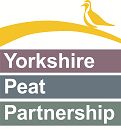With the most amazing views (once the cloud has lifted), it sits overlooking Angram reservoir with a backdrop of Great Whernside and the surrounding hillsides of Nidderdale.
A new future has begun for a small piece of Nidderdale AONB
Aerial view of peatland restoration in Nidderdale © Aaron de Raat
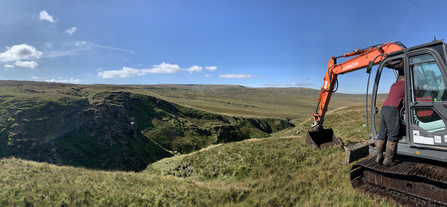
Digger above Nidderdale © Jenny Sharman
At the top of the catchment, its restoration is paramount to contributing to the quality of water flowing into the surrounding becks and reservoirs.
My first visit to East Gill revealed an area criss-crossed by a network of narrow, deep, draining channels feeding into wider gullies that cut two to three metres into the peat. At the heart of this hydrological breakdown lay an area stripped of all vegetation. The fully exposed surface peat was being eroded on a daily basis by the wind and rain that are so characteristic of this exposed site.
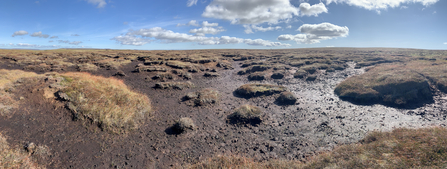
Panorama of bare peat erosion in Nidderdale © Jenny Sharman
After several months of reprofiling, turfing and blocking channels with peat bunds and timber dams, and the placing of coir logs on the flatter areas of bare peat followed by the brash, lime, seed and fertiliser needed to promote revegetation, the site was finally put to bed.
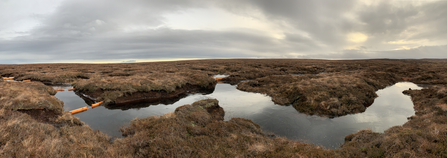
Timber dams holding water back on East Gill © Jenny Sharman.
My return, a year later, to monitor how everything had done, turned into a day of amazed photo-taking and staring in wonder at how brilliantly nature had responded to the gentle nudge it had been given. With water no longer channelled away from the site, the brash-covered ground had, with the help of the retained moisture and a summer of sun, turned this once blackened land a brilliant shade of green. Mosses, sphagnums, cotton grasses, all looked vibrant and well, creeping over the coir and once more taking over this unique landscape, beginning that long journey of growth and gradual decay that is so vital to build up the layers of lost peat.
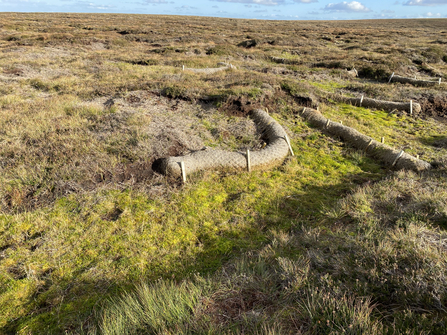
Vegetation recolonising peat behind and between coir bunds © Jenny Sharman.
I left site as the sun began to sink behind the hills armed with a camera full of pictures, and a large smile on my face! A big thank you to the contractors, Dinsdales, for their enthusiasm and hard work on this site, and to the landowners and tenant farmers for believing in a new life for East Gill.
East Gill from the air post restoration © Aaron de Raat
The restoration works at East Gill were funded by the EU Life Programme, through the Pennine PeatLIFE project.
